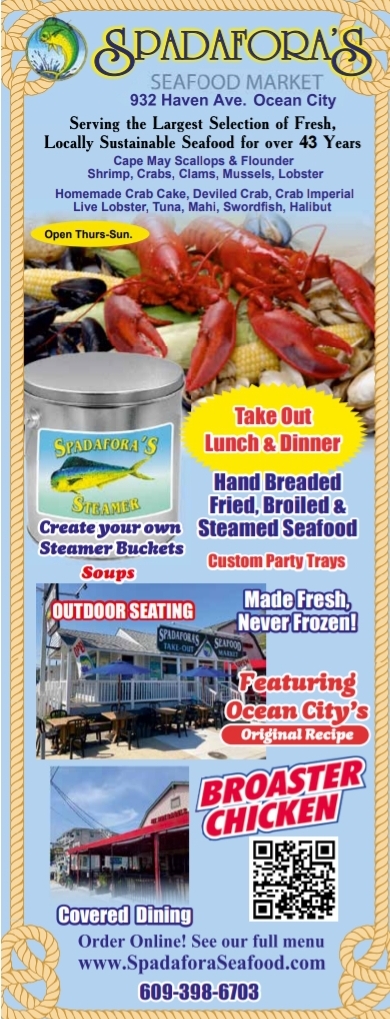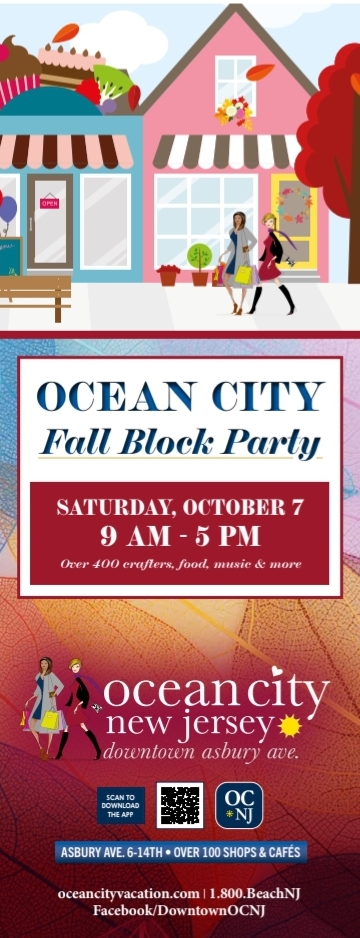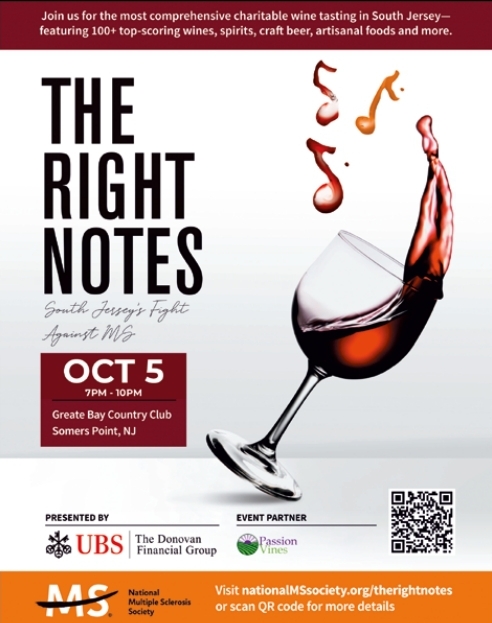Bay Shores and Midnight Court
By Bill Kelly
If you go back to the old spot today where Bay Shores used to stand, it takes some imagination to understand what was.
For a time it was a place where they changed the name, chefs and management every few years or so to become a fancy-dancy, hot to trot operation with a wine list, small portions and a staid jazz band playing soft standard tunes as a backdrop for awkward conversations.
Today it’s a tiki bar which has good music on the stage for the most part, where people drink iced mixed drinks with umbrella stirrers and marvel at the bay views of Ocean City and the Causeway Bridge, take in the salt air and good weather in a vacationing, wish-you-were-here kind of postcard setting.
But you don’t know what a good time is if you require a conversation to have one. You could never know unless you were there, in the same exact spot, the same small quadrant of this universe, in the same place but in a different time, actually not that long ago, still within some living memories. Sometimes it comes back, like a latter day Brigadoon in the mist.
Usually after hours, when there is no one else around and the waves lap at the deck pilings, the vibes are set in motion and the memories throwback to that same place in time. If Sherman could set the WayBack Machine to the summer of ’65, you would find Johnny Caswell and the Crystal Mansion playing on the back stage, the full moon high tide bringing up small waves that occasionally seep through the cracks in the back dance floor as people move to Caswell singing, “School’s out, come on let’s go! We’re going down the Shore, just like before, ‘cause there’s no school anymore, so baby, meet me at the Shore…”
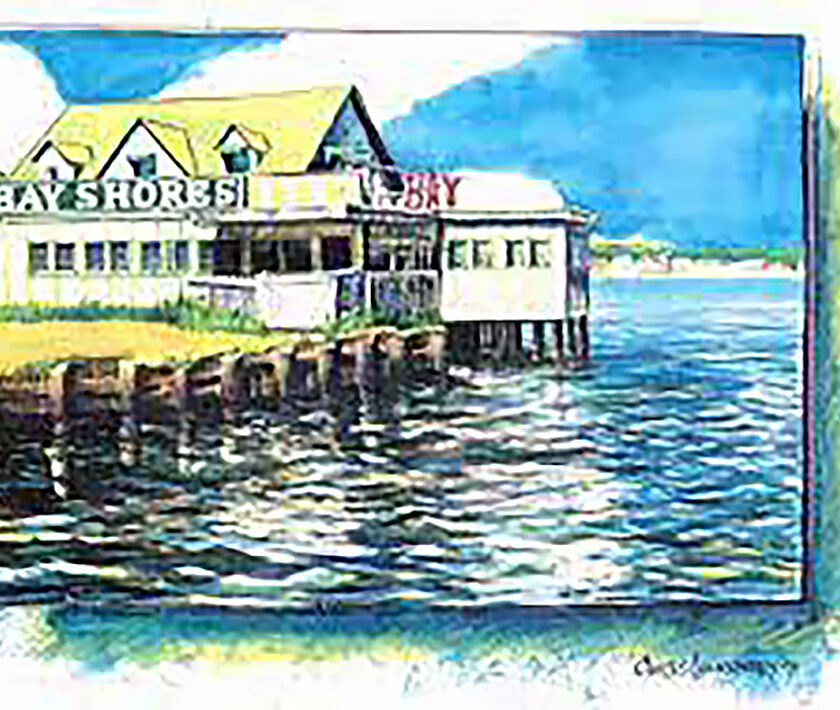
As Caswell’s set winds down, the other stage comes to life, with Pete Carroll and the Carroll Brothers chiming in. They come on as the dancers shift from one floor to another. As the beat goes on and as the band gets cooking, it doesn’t take long for the house to be totally rocking once again. The Carroll Brothers aren’t real brothers; they just call themselves brothers in a white, soul brothers sense.
As they reach a fever pitch, a girl jumps up on the bar to dance and nobody stops her. And then the sax player walks on to the nearest bar, lays down, his back on the bar as he knocks over empty bottles and glasses while he continues playing and wiggling around like an overturned turtle.
The place goes wild with everyone clapping, singing along or shouting, as you couldn’t have a conversation in Bay Shores between the hours of 8 p.m. and 2 a.m. when the music went off.
Then, unannounced and seemingly out of nowhere, Gary U.S. Bonds jumps on stage, gives Pete a hug, and grabs a microphone as the band, drummer first, shifts beats to a very familiar – “Quarter-to-Three,” – “Dancin’ with Daddy G,….” The place is going crazy with everyone moving and dancing wherever they are, including the bartenders and bar backs, who stop working for a few moments to take it all in.
Then between songs, Pete Carroll announces that Gary U.S. Bonds would be performing that song again a few hours later, at 2:45 a.m. at the Dunes night club. There’s a roar at the door that gets everyone’s attention. Jack Murray, sitting on a bar stool by the door, jumps back, slips cash into his jacket and leans against the wall as a motorcycle roars in. You could hear it coming before you see it ride in the door, around the bar and onto the dance floor where the dancers scatter and the biker does circles and a figure eight.
Pete quickly whips the band into an appropriate song, as the bouncers grab the guy on the motorcycle, shut off the bike engine and hand the kid over to some of Bader’s Raiders, who were already at the door.
Bader’s Raiders, the summer cops, would throw him in the back of their paddy wagon and take him to the drunk tank jail at City Hall where he would wait until he got a chance to meet Judge Helfant, whose Midnight Court began nightly at midnight.
The guy who rode his motorcycle on the Bay Shores dance floor did one of the things you have to do to get picked up by Bader’s Raiders and meet Judge Helfant, the others being fighting, drunk and disorderly, littering, assault and battery or urinating in public.
There were more girls picked up than you might expect, like the girl in the song “Chest Fever” by The Band. They got intoxicated, got jealous of their boyfriends dancing with other girls and did other crazy things like getting into fights. They were quickly dispensed with by the efficient work of the bouncers and handed over to Bader’s Raiders.
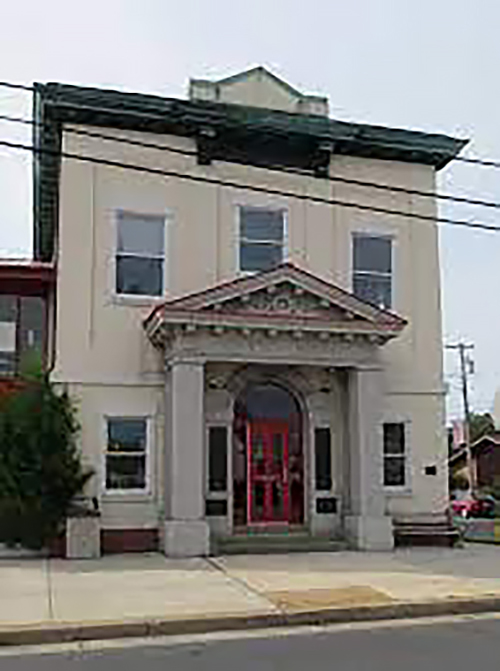
The paddy wagon took offenders to City Hall – that’s the Old City Hall, now the county library, where they were put into the group drunk tank until Judge Helfant arrived and began his court proceedings precisely at midnight. One by one the drunk tank was emptied and the offenders brought before the judge who, having a list of the contents of the pockets of the defendants, knew how much cash they had on hand and fined them whatever that amount happened to be. If the arrested person was broke, they were given a dime to make a phone call from the pay phone to get the bail money or fine.
Judge Edwin Helfant was a good judge for the city. He ran a good, regular court a few nights a week. The police and city administrators liked him, as did the public, and if you were from Somers Point you got off easy.
What made the midnight session a kangaroo court, as they called it, was the fact that no records were kept. And since the defendants didn’t mind that their offenses didn’t go on their official record, they didn’t complain. And the cash that was collected by Helfant was spread around loosely, like fertilizer. “The more you spread it around the better it works for you,” he said, later acknowledging that some people, including himself, profited from the arrangement.
The mayor and taxpayers, while kept in the dark about the details, didn’t mind Helfant’s Midnight Court sessions since they knew it paid for the extra summer season police force and kept taxes down, so everybody liked it and nobody complained. It was just the way things were done at the time.
But the guy on the motorcycle was filmed by the KYW TV crew as he rode into Bay Shores and got arrested, and the KYW crew followed the paddy wagon to City Hall and learned about Helfant’s Midnight Court sessions, and David Brenner smelled a story.
Helfant said he would not permit television cameras in his court, period.
Next up: Episode 17 – Nucky Johnson and the judge visit the Albert Brothers
To comment on this story: Billkelly3@gmail.com
